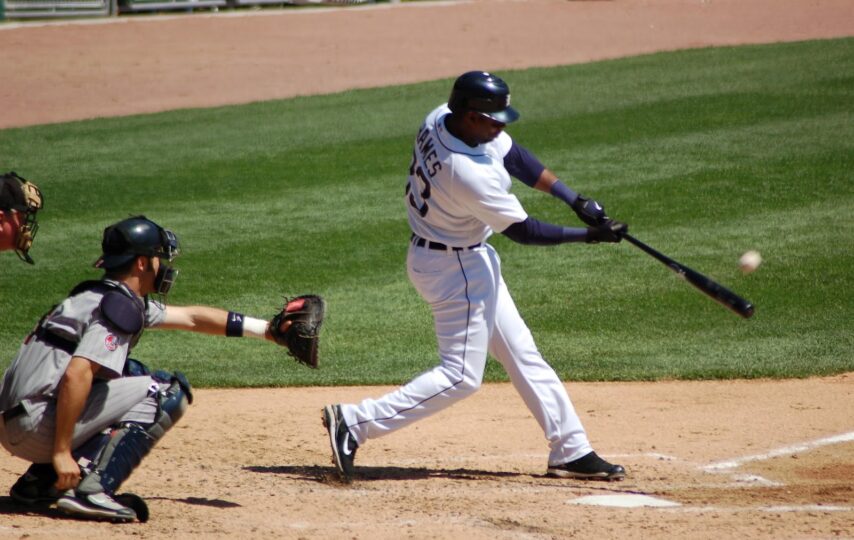Ever wondered how baseball enthusiasts distill a player’s offensive prowess into a single, digestible number?
Do you know “What Does OPS mean?”, a numerical key that unlocks the intricacies of a player’s performance at the plate. OPS, an acronym for On-base Plus Slugging, is not just a jumble of letters in the baseball lexicon—it’s a dynamic statistic that merges the art of getting on base with the science of power hitting.
Imagine it as a magic formula, encapsulating a player’s ability to reach base through hits, walks, and hit-by-pitches, while also factoring in the thunderous impact of their slugging power. In this interactive exploration, let’s know about “What is OPS in Baseball?”, demystifying the numbers that encapsulate a player’s offensive prowess in the grand game of baseball.
What is OPS in Baseball?
OPS, or on-base plus slugging, is a statistic used in baseball that combines a player’s slugging percentage (SLG) with on-base percentage (OBP). A player’s ability to reach base via hits, walks, and hit-by-pitches is measured by the on-base percentage, and their power is measured by the slugging %, which accounts for the total bases they score via hits. OPS, which combines these two measures, offers a thorough picture of an individual’s offensive performance by taking into account both their capacity for power hits and getting on base. Baseball analysts often use a player’s OPS to evaluate their total offensive output since it typically indicates a more productive and well-rounded offensive talent.
How is OPS Calculated in Baseball? A Comprehensive Guide to Computing On-base Plus Slugging

Image credit – Science News Explores
To calculate OPS (On-base Plus Slugging) in baseball, you need to add together a player’s On-base Percentage (OBP) and Slugging Percentage (SLG). Here’s the formula:
OPS = OBP + SLG
1. On-base Percentage (OBP):
OBP = Hits + Walks + Hit-by-Pitches
_________________________
Plate Appearances
2. Slugging Percentage (SLG):
SLG = Total Bases
____________
At-Bats
Total Bases are calculated as follows:
Total Bases = (Singles + (2 x Doubles) + (3 x Triples) + (4 x Home Runs))
Remember that walks, hit-by-pitches, and sacrifices are not included in At-Bats when calculating Slugging Percentage.
Once you have the OBP and SLG values, simply add them together to get the OPS. OPS is a convenient statistic for evaluating a player’s overall offensive performance by considering both their ability to get on base and their power-hitting skills.
let’s work through a hypothetical example to calculate OPS:
Suppose a baseball player, let’s call him Player X, has the following statistics:
| – Hits: 40 – Walks: 15 – Hit-by-Pitches: 3 – Singles: 25 – Doubles: 10 – Triples: 2 – Home Runs: 3 – At-Bats: 150 – Plate Appearances: 180 |
Now, let’s calculate the individual components:
1. On-base Percentage (OBP):
OBP = Hits + Walks + Hit-by-Pitches
___________________________________
Plate Appearances
OBP = 40 + 15 + 3
________________
180
OBP ~ 0.322
2. Slugging Percentage (SLG):
Total Bases = (25 + 2 x 10 + 3 x 2 + 4 x 3) = 25 + 20 + 6 + 12 = 63
SLG = Total Bases
_____________
At-Bats
SLG = 63/150
SLG ~ 0.42
Now, add OBP and SLG to get the OPS:
OPS = OBP + SLG
OP ~ 0.322 + 0.42
OPS ~ 0.742
So, in this example, Player X has an OPS of approximately 0.742. This value provides a summary of his overall offensive performance, considering both his on-base ability and power-hitting skills.
All Time Best Players with Highest OPS Ever

Image credit – ESPN
Here are some the most notable players as of OPS :
1. Babe Ruth: Frequently regarded as one of the all-time greats in baseball, Babe Ruth had an incredible career with an OPS well over 1.000. In his day, he was the only player who could hit for power and get on base.
2. Ted Williams: Ted Williams is recognized by many as one of the best hitters in baseball history. He was the last player to have a career OPS over 1.100 and to end a season with a batting average over.400 (.406 in 1941).
3. Barry Bonds: With a lifetime OPS of over 1.000, Bonds owns the records for both career and single-season home runs. He was one of the most formidable offensive players of the modern period because of his mix of strength and plate discipline.
4. Lou Gehrig: Known for his dependability and longevity, Gehrig was a great first baseman for the New York Yankees with a career OPS of over 1.000.
5. Mickey Mantle: Mantle ended his career with a solid on-base percentage (OPS) and was a formidable switch-hitter for the New York Yankees. His amazing strength was well-known on both sides of the plate.
6. Albert Pujols: Although he has declined in recent years, Pujols was once one of baseball’s most dangerous hitters. He had a high OPS during his heyday because of his exceptional mix of power and contact hitting.
7. Mike Trout: One of the most dominating players of his generation, as of the latest information update I have. Power, speed, and an acute batting eye are all combined by him to produce consistently excellent OPS figures.
Frequently Asked questions
Here are some frequently asked questions to know about “What is OPS in Baseball?”:
1. In baseball, what does OPS mean?
– The acronym for On-base Plus Slugging is OPS.
2. What is the formula used to compute the On-base Percentage (OBP)?
– To calculate OBP, add up all of the hits, walks, and hit-by-pitches, then divide the amount by the number of plate appearances.
3. What is the Slugging Percentage (SLG) composed of?
– The total bases a player accrues from singles, doubles, triples, and home runs is divided by the total number of at-bats in the SLG calculation.
4. What makes on-base percentage (OPS) a complete offensive metric?
– The answer is that OPS provides a more comprehensive measurement of offensive performance by combining a player’s power-hitting ability (SLG) and ability to get on base (OBP).
5. What does a higher OPS number usually mean in terms of a player’s performance?
– An offensive player with a higher OPS value usually has a great mix of power hitting and on-base ability, making them more productive and well-rounded players.
Conclusion
In this article we’ve let you know about “What does OPS mean?” And have provided you detailed information about it. As we come to the end of our investigation into the realm of baseball OPS, we have discovered a potent statistic that acts as the Rosetta Stone for understanding an individual’s offensive effect.
Through the combination of slugging power and on-base percentage, OPS provides a complete picture of a player’s ability at bat. It’s a story spun from each hit, walk, and home run, not simply a number. The symphony of a player’s talent, strategy, and pure power in the age-old game we all love is known as OPS, so keep that in mind the next time you see it on the baseball stats sheet.








